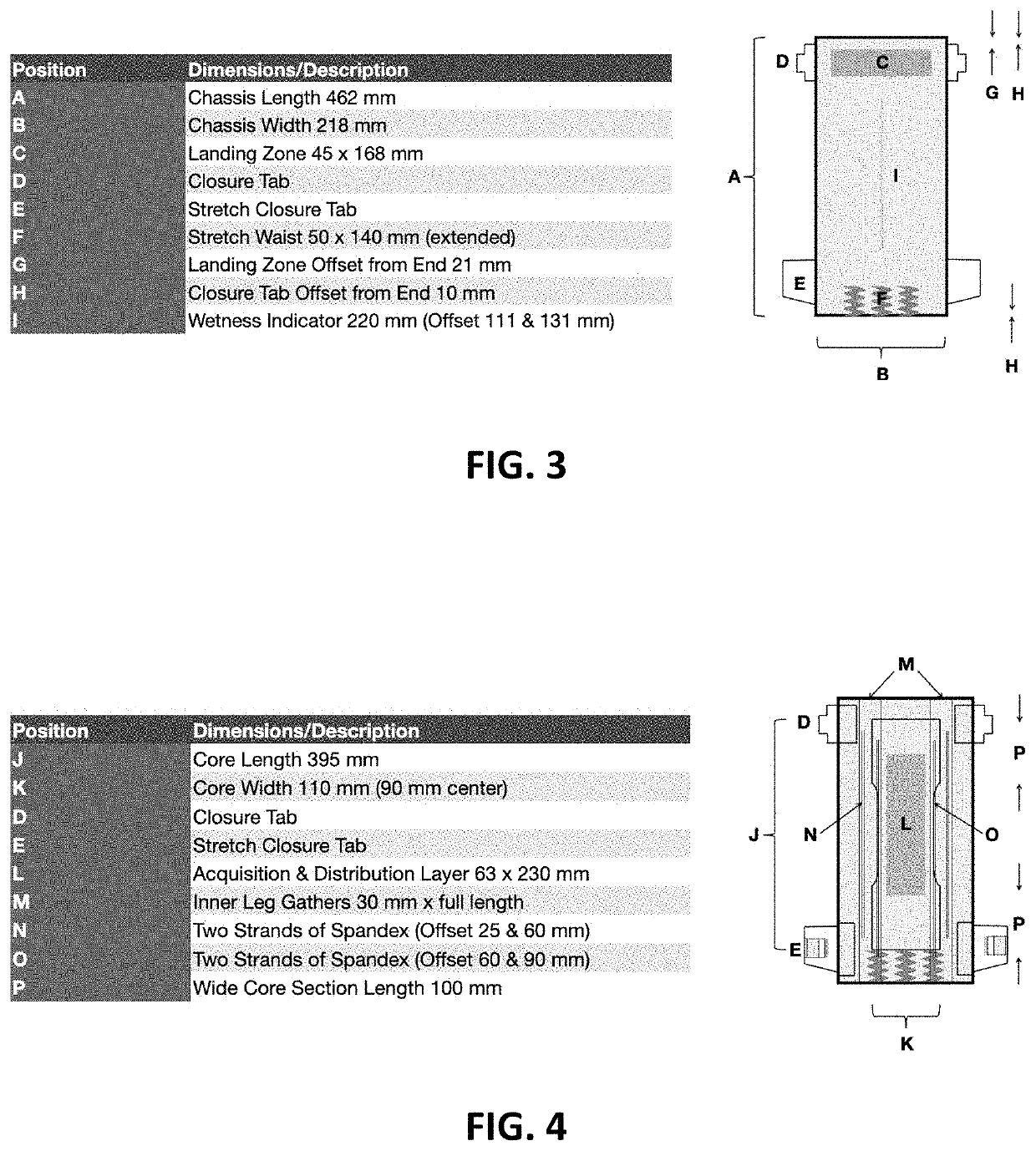Disposable baby diapers and related methods
a technology for diapers and diapers, applied in the field of disposable diapers, can solve the problems of reusable cloth diapers falling out of favor, disposable diapers quickly taking hold, and infants and young children generally having a difficult time controlling bodily functions, so as to increase the area of hooks, increase the durability of diapers, and increase the density of hooks
- Summary
- Abstract
- Description
- Claims
- Application Information
AI Technical Summary
Benefits of technology
Problems solved by technology
Method used
Image
Examples
Embodiment Construction
[0037]Before describing various embodiments of the present disclosure in detail, it is to be understood that this disclosure is not limited to the specific parameters and description of the particularly exemplified systems, methods, and / or products that may vary from one embodiment to the next. Thus, while certain embodiments of the present disclosure will be described in detail, with reference to specific features (e.g., configurations, parameters, properties, steps, components, ingredients, members, elements, parts, and / or portions, etc.), the descriptions are illustrative and are not to be construed as limiting the scope of the present disclosure and / or the claimed invention. In addition, the terminology used herein is for the purpose of describing the embodiments, and is not necessarily intended to limit the scope of the present disclosure and / or the claimed invention.
[0038]While the detailed description is separated into sections, the section headers and contents within each se...
PUM
| Property | Measurement | Unit |
|---|---|---|
| Fraction | aaaaa | aaaaa |
| Size | aaaaa | aaaaa |
| Size | aaaaa | aaaaa |
Abstract
Description
Claims
Application Information
 Login to View More
Login to View More - R&D
- Intellectual Property
- Life Sciences
- Materials
- Tech Scout
- Unparalleled Data Quality
- Higher Quality Content
- 60% Fewer Hallucinations
Browse by: Latest US Patents, China's latest patents, Technical Efficacy Thesaurus, Application Domain, Technology Topic, Popular Technical Reports.
© 2025 PatSnap. All rights reserved.Legal|Privacy policy|Modern Slavery Act Transparency Statement|Sitemap|About US| Contact US: help@patsnap.com



